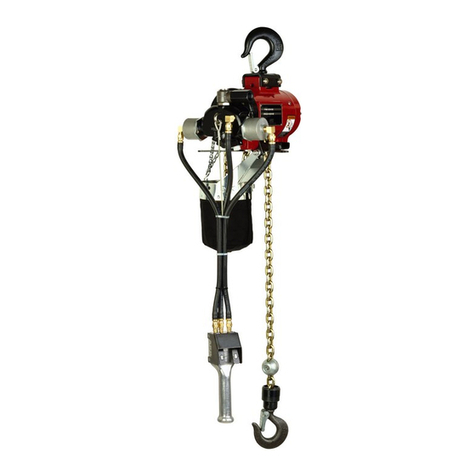
501144-001 - Product Manual - PH Series Personnel Hoists - Revision 03 Revision Date - 2018-06-13
Page 6
1.2 - Pelsue Product Warranty
PELSUE FALL ARREST/ RETRIEVAL PRODUCT WARRANTY
• Pelsue products are designed and engineered to perform as stated in published specications. Quality
materials and workmanship are used in the manufacture of this product. With regular maintenance and
proper care, Pelsue equipment provides many trouble free hours of operation.
• The T.A. Pelsue Company warrants to the buyer that material furnished will conform to specications
and will be free from defects in material and workmanship from the date of shipment to the original
buyer, for the period listed by product description at the bottom of this warranty statement.
• In the event of failure of any components of a Pelsue product within the warranty period, service must
be pre-approved by the T.A. Pelsue Company and service must be performed by the T.A. Pelsue Com-
pany Parts and Service Department in Englewood Colorado, or at the option of T.A. Pelsue Company,
service may be performed at any designated service center, which may include any authorized service
center for the component manufacture.
• Damage or failure due to misuse, mishandling, or unauthorized modications will not be covered by
this warranty. Unless otherwise agreed, the T.A. Pelsue Company shall repair or replace the defective
components within (30) calendar days of notice of failure. T.A. Pelsue Company’s obligation hereun-
der, shall be limited to the repair or replacement of the product or component as set forth above, and
shall not include any liability whatsoever for damages caused by such failure, including but not limited
to consequential or incidental damages owing from use or lack of use of product.
• Any replacement, repair, modication, installation or other service performed by the T.A. Pelsue Com-
pany shall be warranted by the remainder of the unexpired period of the warranty, or for a period of (90)
calendar days, whichever is longer.
• All materials or parts returned for credit or warranty shall be returned only with prior approval, and will
be subject to factory inspection before credit is allowed. Parts claimed defective will be replaced upon
request and will be invoiced as purchased, subject to credit when the parts claimed to be defective
have been received and examined by the factory.
• This warranty is expressly in lieu of all other warranties expressed or implied, including any warranties
of merchantability or warranties of tness for any particular use and all other obligations or liabilities in
connection with the sale of this equipment.
Product Description Warranty Coverage*
• Davits and Bases, Life Guard Systems, Fall Arrest Towers,................ 1 year
Hitch Mounts, Mounting Sleeves
• Winches................................................................................................ 1 year
• Winch Cable and Rope (not including standard wear and................... 3 months
tear or misuse or improper storage)
• Rope..................................................................................................... 3 months
• Pelsue Painted or Plated Surfaces....................................................... 1 year
*From date of shipment to original buyer.
T.A. Pelsue Company, 2500 South Tejon Street, Englewood, Colorado 80110, 800-525-8460





























